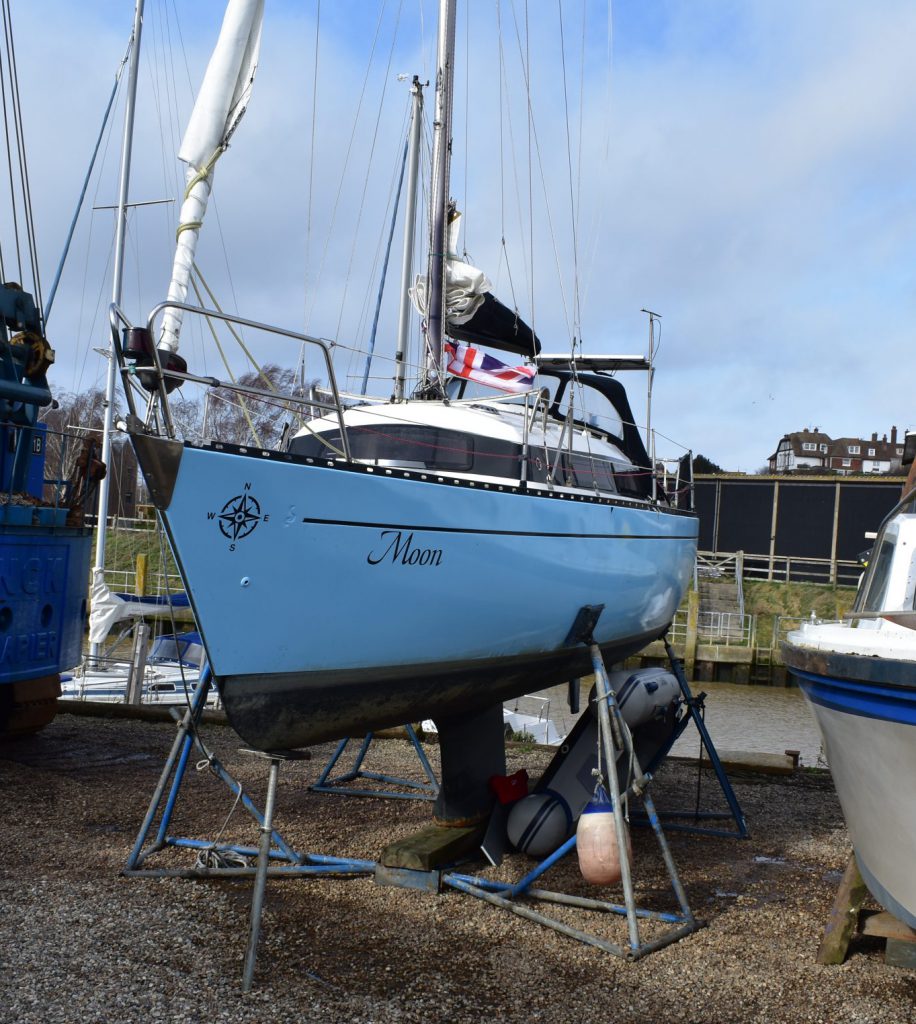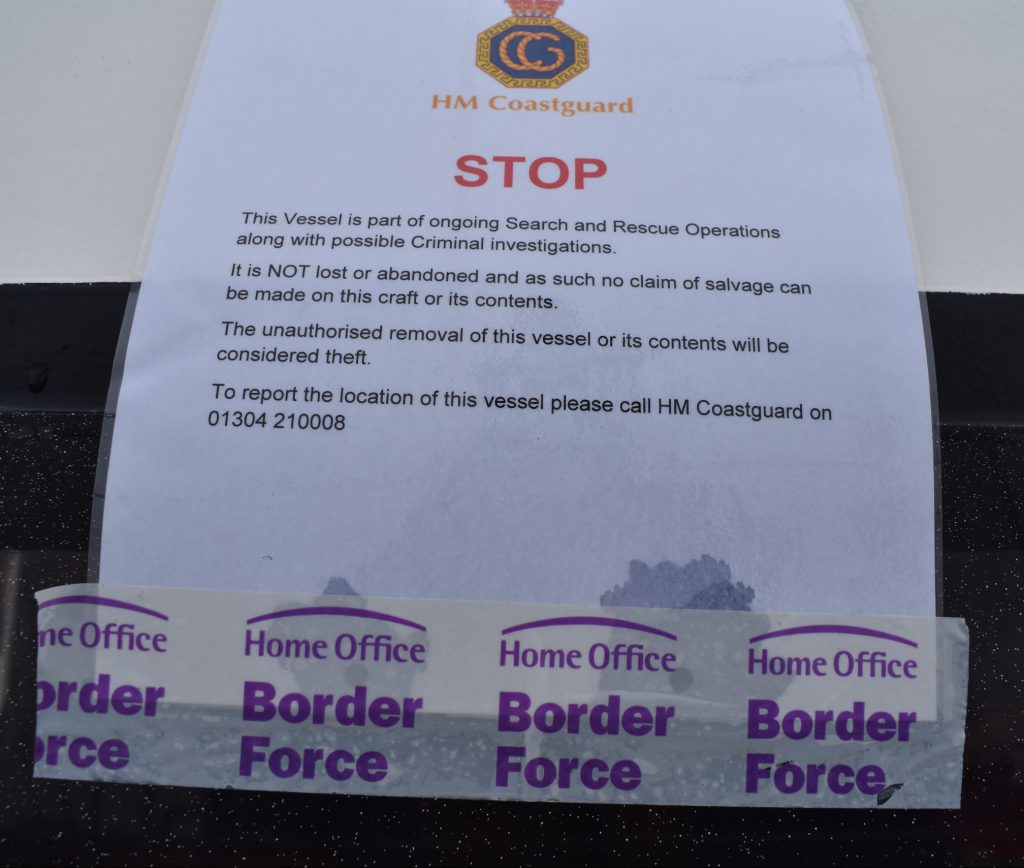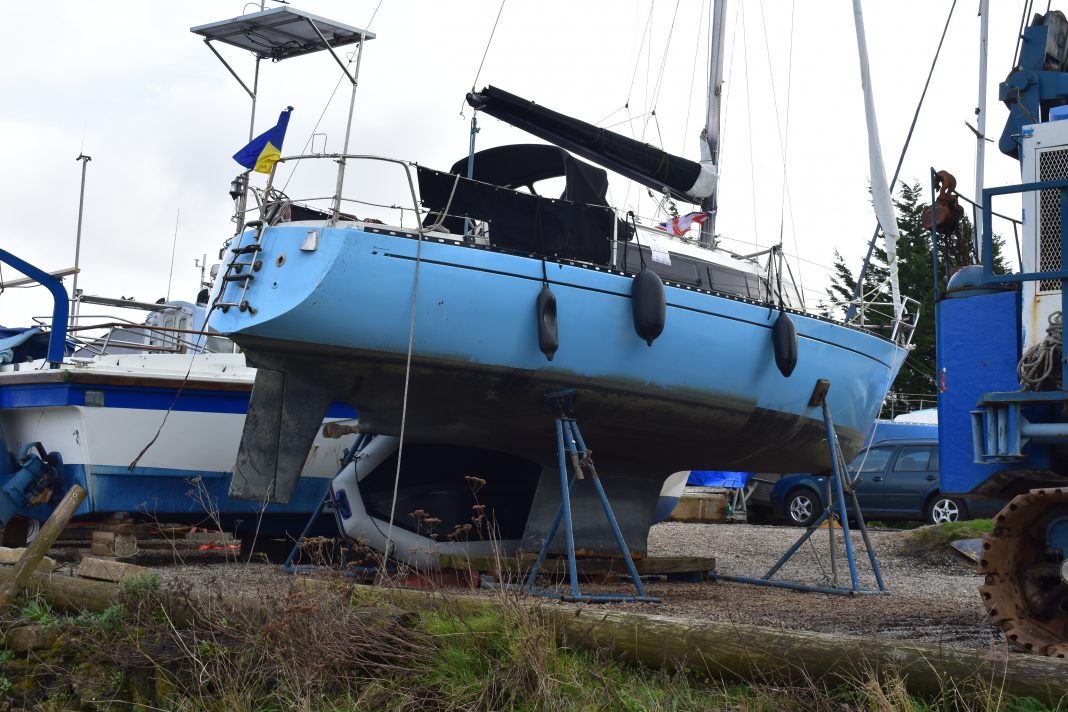We are used to seeing film and photograph evidence of migrants leaving French and Belgian beaches perched precariously on overcrowded small dinghies to make the dangerous crossing to England – having first, of course, paid the providers of these dinghies up to £3,000 and sometimes more, for the privilege of risking their lives.
However, last Saturday, it was shown that there is a marginally safer and more comfortable way of managing the crossing when a 28ft sailing yacht with 21 migrants on board arrived in the River Rother and started to make its way quietly up river to Rye. This is not the first boat to have done this, local knowledge suggests that more than a few vessels – yachts, motor boats and fishing boats – have found their way up river to the safety of one of the many boatyards where their human cargo could be discharged unnoticed.
It has happened the other way as well with one occasion when a man, rumoured to be a foreign diplomat and considering himself in danger, perhaps of assassination, was ferried down the river and into Rye Bay where a ship was waiting to take him on board. Sometimes truth really is every bit as strange as fiction.

Last Saturday the smart-looking little blue-hulled yacht, called Moon, came through the harbour entrance and, overloaded with its human cargo, started to make its way up river.
The tide was falling and in these conditions care is needed and local knowledge a great help if emerging shallows are to be avoided. Unfortunately for the skipper he failed to avoid one of the shallow spots, went aground and despite his efforts, was unable to free the boat.
Aware that something was wrong, the passengers came up from the cabin, rushed to one side to see what was wrong and caused the boat to take on a significant angle of heel resulting in several falling overboard. One man, probably the skipper, had already jumped into an inflatable dinghy and rowed himself ashore, leaving the rest to fend for themselves.
Fortunately the remaining passengers all got off safely and were able to scramble to the bank. 16 were in due course picked up by Border Force and police and taken to an immigration centre to be processed. More may have been found since. It is not known at the time of writing whether the skipper – who is likely to face at the least, a large fine and possibly a prison sentence – has been located.
The Rye Harbour RNLI collected the yacht on the next tide, bringing it to their jetty. It has since been moved to a yard up river where it now lies, formally arrested, and awaiting forensic examination within the coming days.

Bought last year from a previous owner in Holland, the boat appears, at first glance, to be well equipped and seaworthy and one must assume was acquired for the purpose of regular people-trafficking trips. At up to £3,000 a head and with 20 fare-paying passengers, it would have been a profitable business at £60,000 for every crossing.
It is not known whether the skipper was also the owner and if he was not, whether the actual owner was aware of the yacht’s activities, or even whether it had been stolen, as it looks as if the blue on the hull has been painted over an original yellow colour. And a couple of other curiosities: a full sized Union Flag was hoisted on the port flag halyard and on the ensign staff at the stern was a flag with a horizontal blue panel over a yellow one. These are the colours of the national flag of Ukraine, whose only access to the sea is in the Black Sea.
So is the boat now registered at a Ukrainian port? This seems odd. And what about the Union Flag? Was this intended to be a “courtesy flag” normally hoisted when a vessel enters waters belonging to a country other than its own? But if this was the case it should have been a small version – normally the Red Ensign – and hoisted on the opposite (starboard) side. Did the skipper not know this? In which case was he even an experienced sailor or maybe just someone to whom the money appealed more than the dangers of the voyage he was undertaking. In due course, perhaps, we might find out.
Image Credits: John Minter .




Last weeks arrival of illegal immigrants coming into Rye harbour on a Yacht makes one wonder how long has this easy access to our shores been happening through Rye harbour, it reminds one of in the 1970s when in similar circumstances a fisherman missed the tide, and the immigrants had to wade ashore on Camber Sands, this made the National News,whilst this latest news,didn’t even make the local television news,unless I’m mistaken,and with some absconding when the Yacht grounded,have they all been found,or will this serious breach of security just be swept under the carpet, as we have seen its not the first time,and one wonders how many more have paid for this easy and safe route,to our shores over the years.
Very good informative article. Thank you
Has any one read the book “Double Crossing “ by Michael Dutton.
This really is truth mirroring fiction. I think the immigrants must have read it.
( available on Amazon )
Smuggling always been part of local history and indeed I do remember a local fisherman spending time in jail in the late 60s for people smuggling in Rye Bay … Brandy for the parson, baccy for the clerk etc. The cargoes have moved on, although I think fags and alcohol still bring a bit of a return.
I’ve always wondered why people trying to get here from France don’t invest their money in a decent boat rather than paying people smugglers to travel in those dreadful dinghies: 21 people at £1,500 each – you can buy a pretty good seagoing boat for £30,000. I’m sure this goes on all the time; with or without assistance from local seafarers.
Thank you for a well written, factual and non-toxic article. Hard to know if these people are refugees or migrants but coming into the country in the way they did illustrates a sense of desperation they must have experienced from where they came.
What an amazing story. Well reported.
Everyone of these people are really no different from us. They have people who love them and people they love. I think they tend to get dehumanised in so many ways.